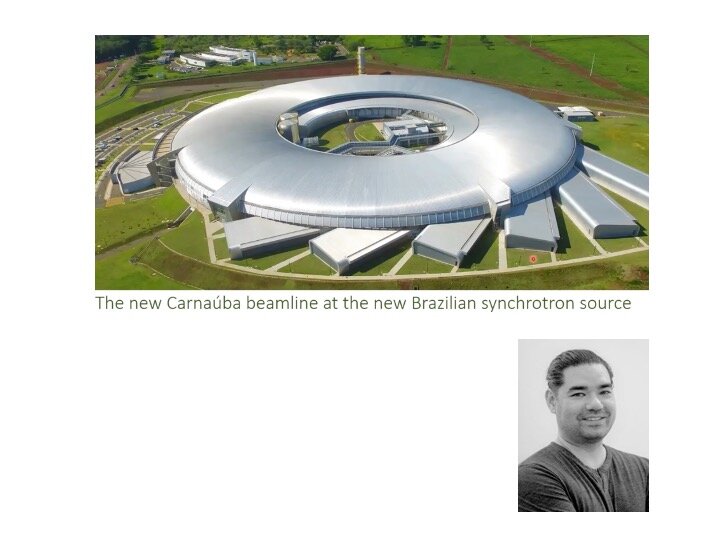VIDEO - CoWork series - The new Carnaúba beamline at the new Brazilian synchrotron source with Carlos Sato Baraldi Dias


VIDEO - CoWork series - The new Carnaúba beamline at the new Brazilian synchrotron source with Carlos Sato Baraldi Dias
In the past years, Brazil has jumped from a 2nd generation machine to a 4th generation synchrotron source. This jump on generation has not only increased flux, brightness, coherence, and so forth but has opened unprecedented opportunities for the Brazilian scientific community. This presentation focuses on the new Carnaúba beamline.
Speaker: Carlos Sato Baraldi Dias, LNLS - Brazilian Synchrotron Light Laboratory, Brazil
The webinar is part of the LINXS webinar series, CoWork. The CoWork webinar series is dedicated to the exploitation of the coherence properties of X-rays for advanced materials characterization, with a special focus on inverse microscopy techniques, such as Coherent Diffraction Imaging (CDI), Ptychography and Holography.
Abstract
In the past years, Brazil has jumped from a 2nd generation machine to a 4th generation synchrotron source. This jump on generation has not only increased flux, brightness, coherence, and so forth but has opened unprecedented opportunities for the Brazilian scientific community. Within this context, the CaRNaúBa (Coherent X-ray Nanoprobe Beamline) beamline is one of the most complex beamlines with two endstations: the TaRuMã (Tender-to-hard x-Ray Microscope) and SaPoTi (Scanning and Ptychography Tomography). In this presentation, I will give an overview of the current developments of both endstations. Will show some of the preliminary results and, hopefully, instigate some discussion on what to expect from those new tools.
Biography
Carlos Sato is a researcher at the Brazilian Synchrotron Light Source working at the CaRNaúBa (Coherent X-ray Nanoprobe Beamline) beamline. He has been working with imaging techniques for more than ten years, including light, electron, and x-ray microscopy. Today, most of his time is spent on constructing and developing x-ray microscopes as part of the Carnaúba team.
